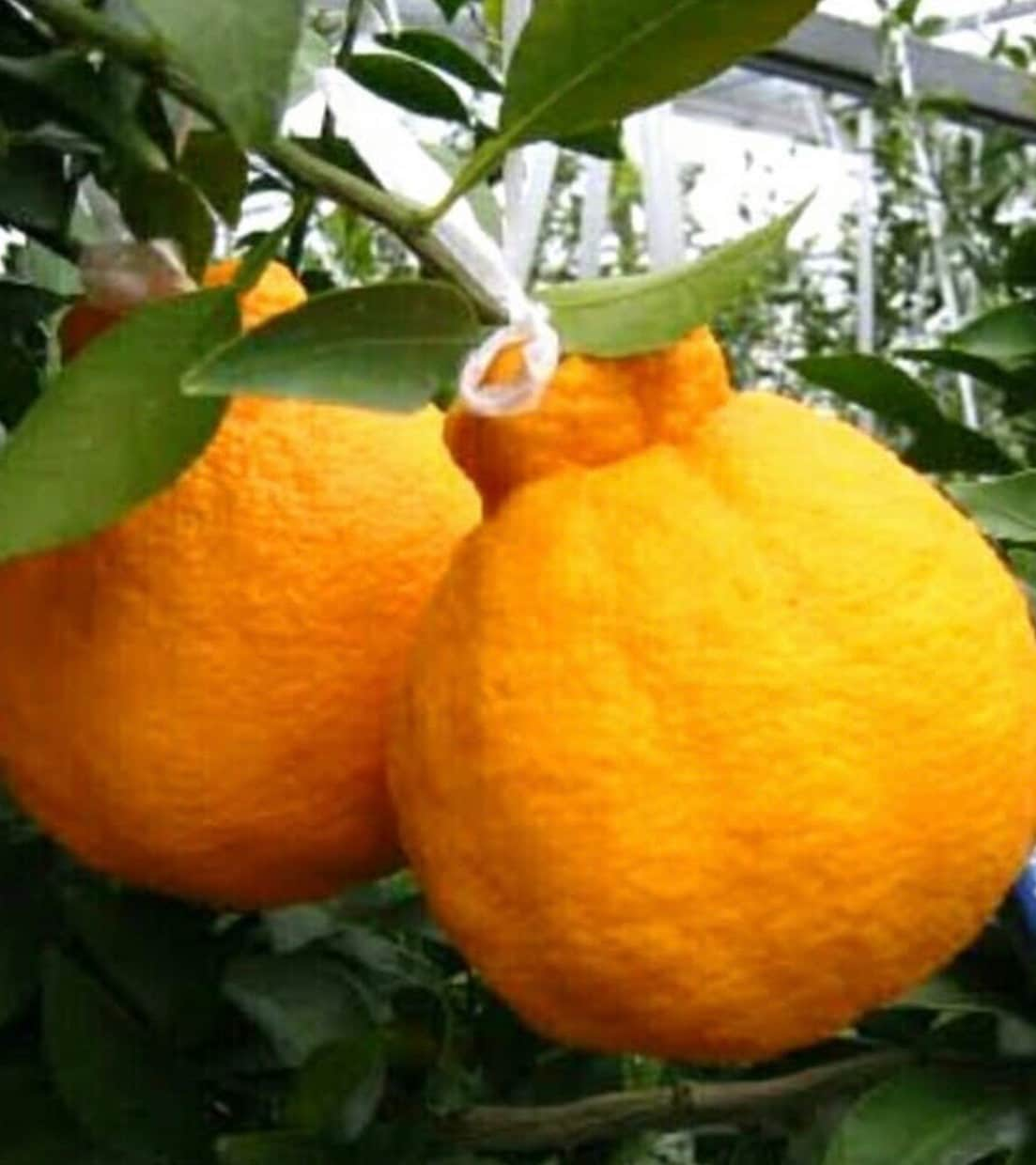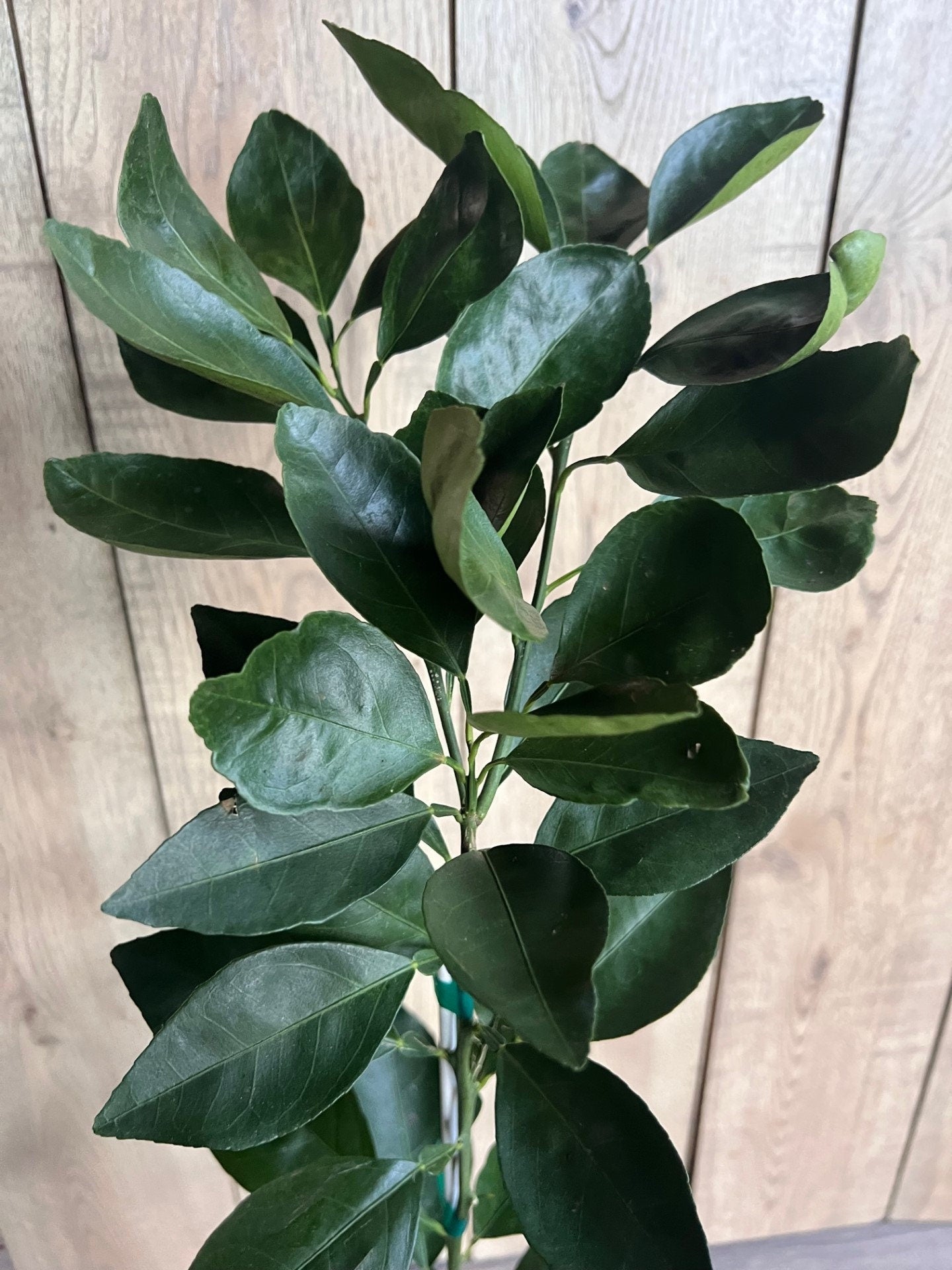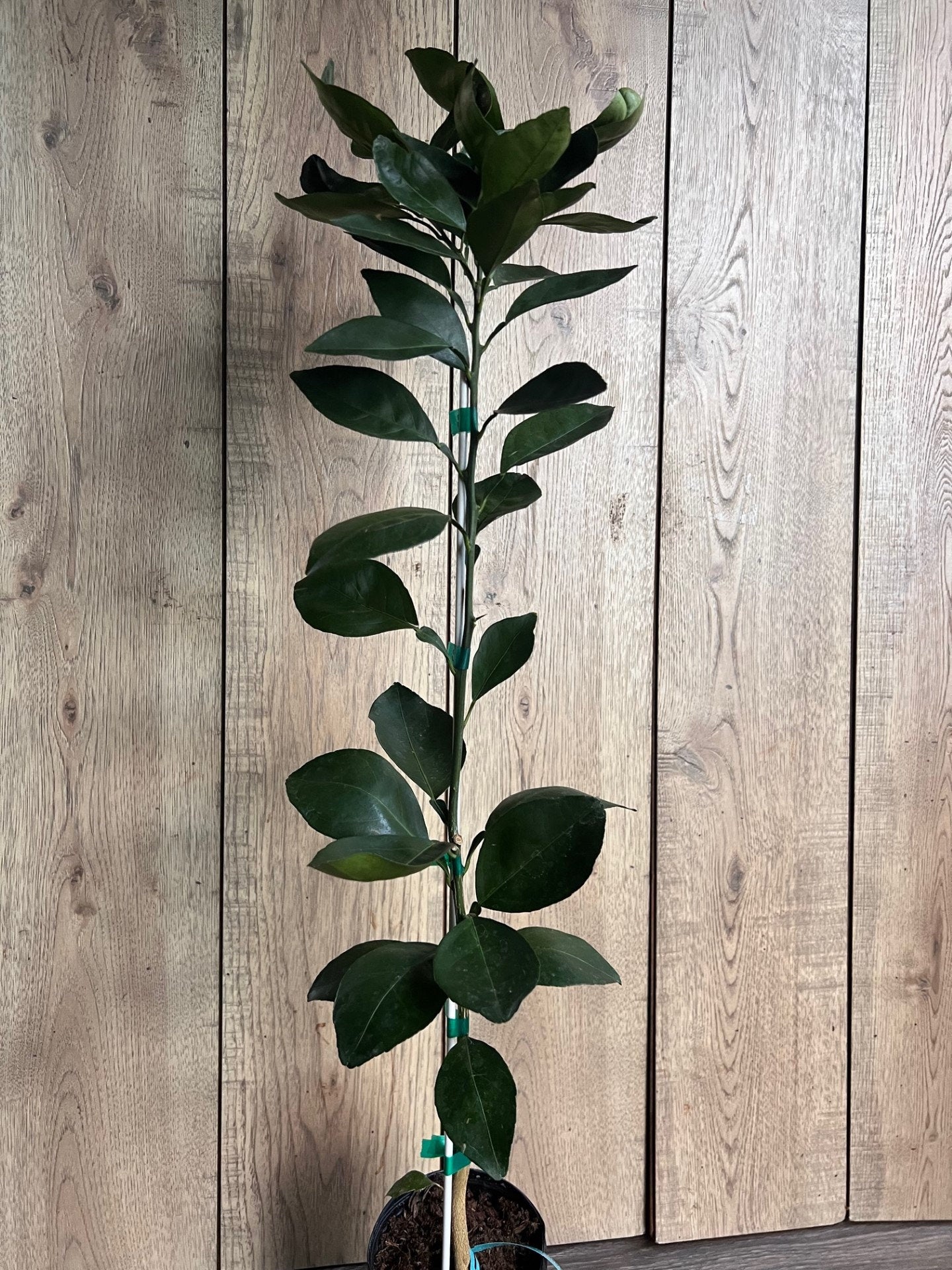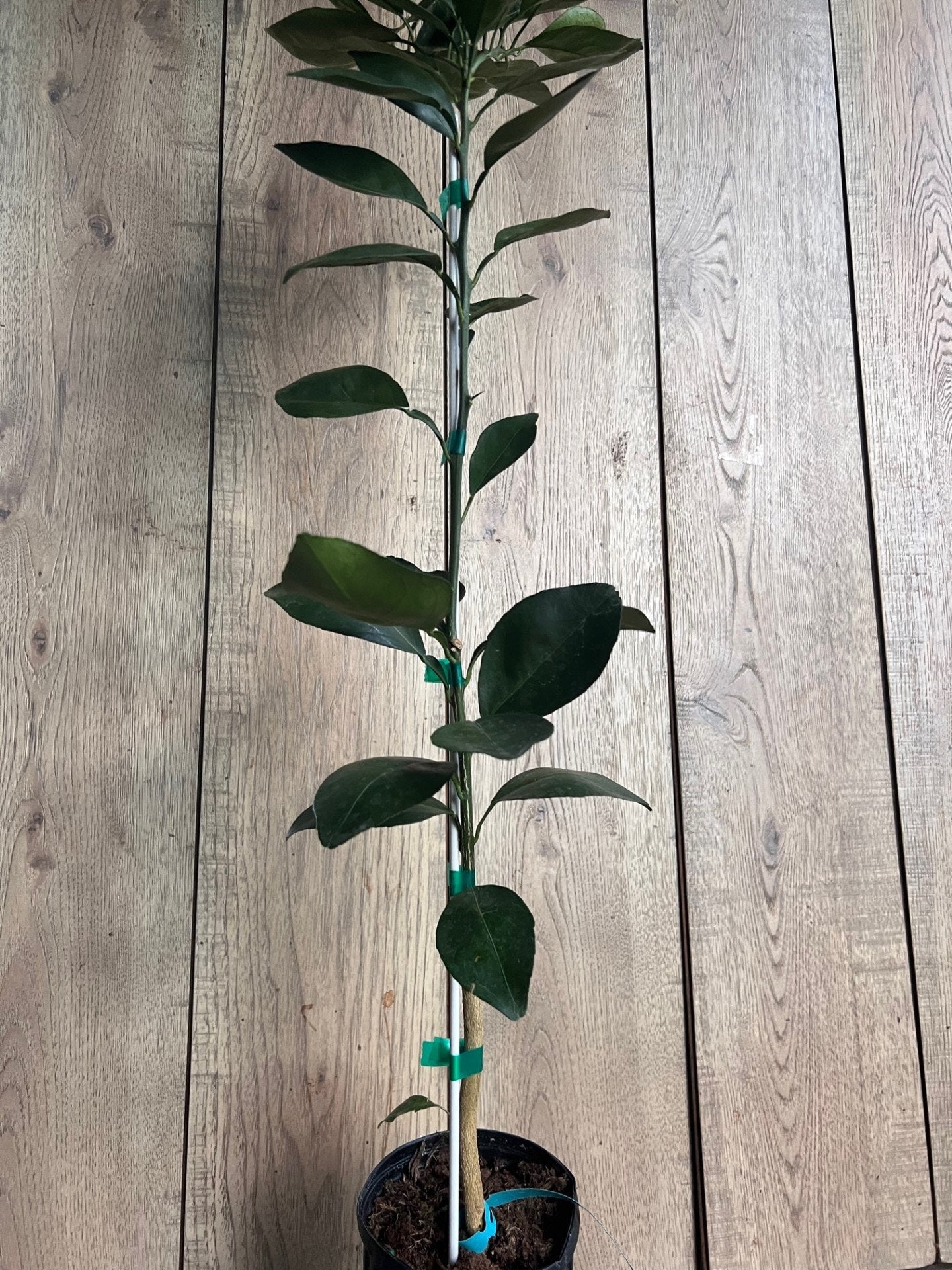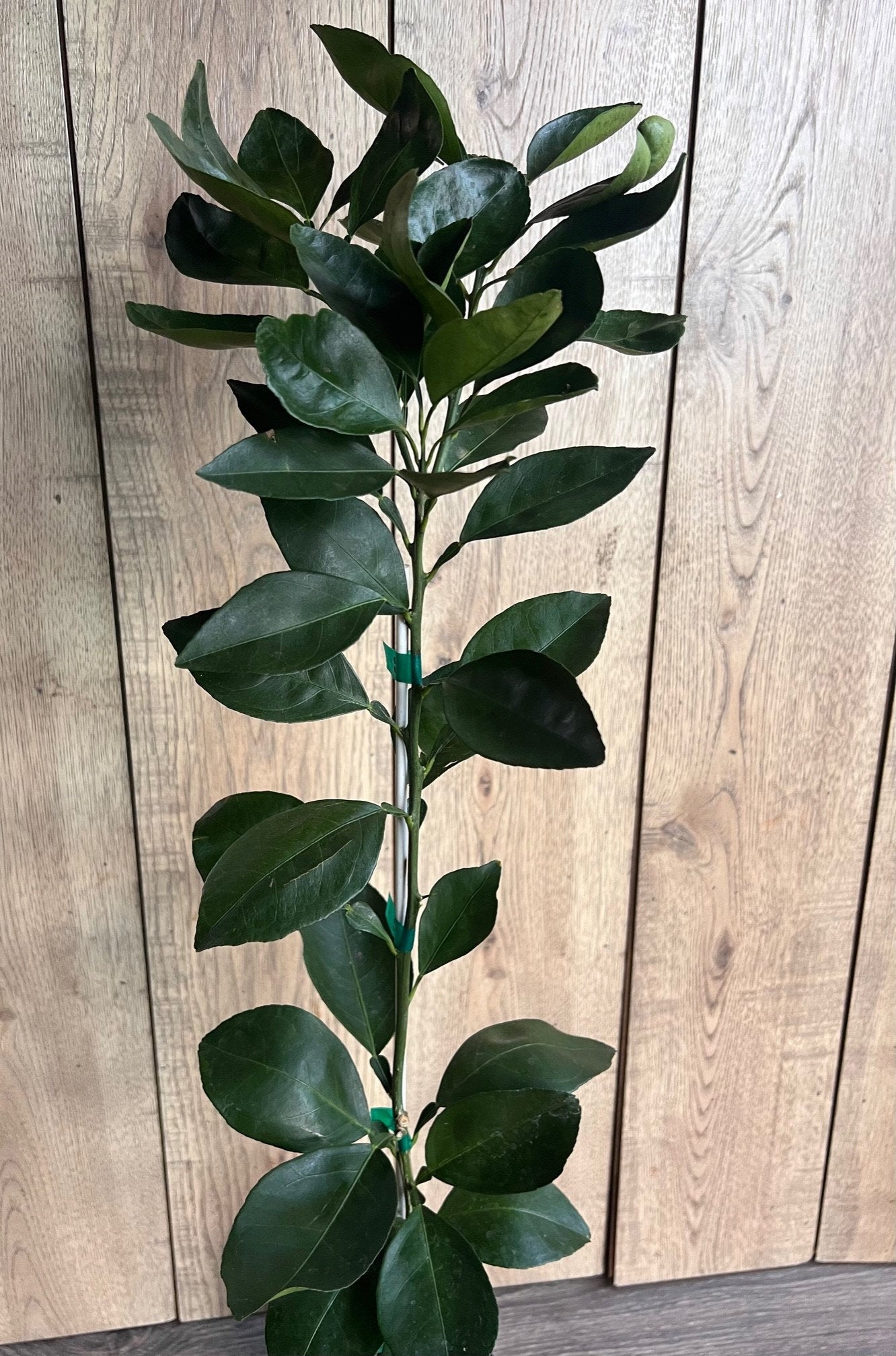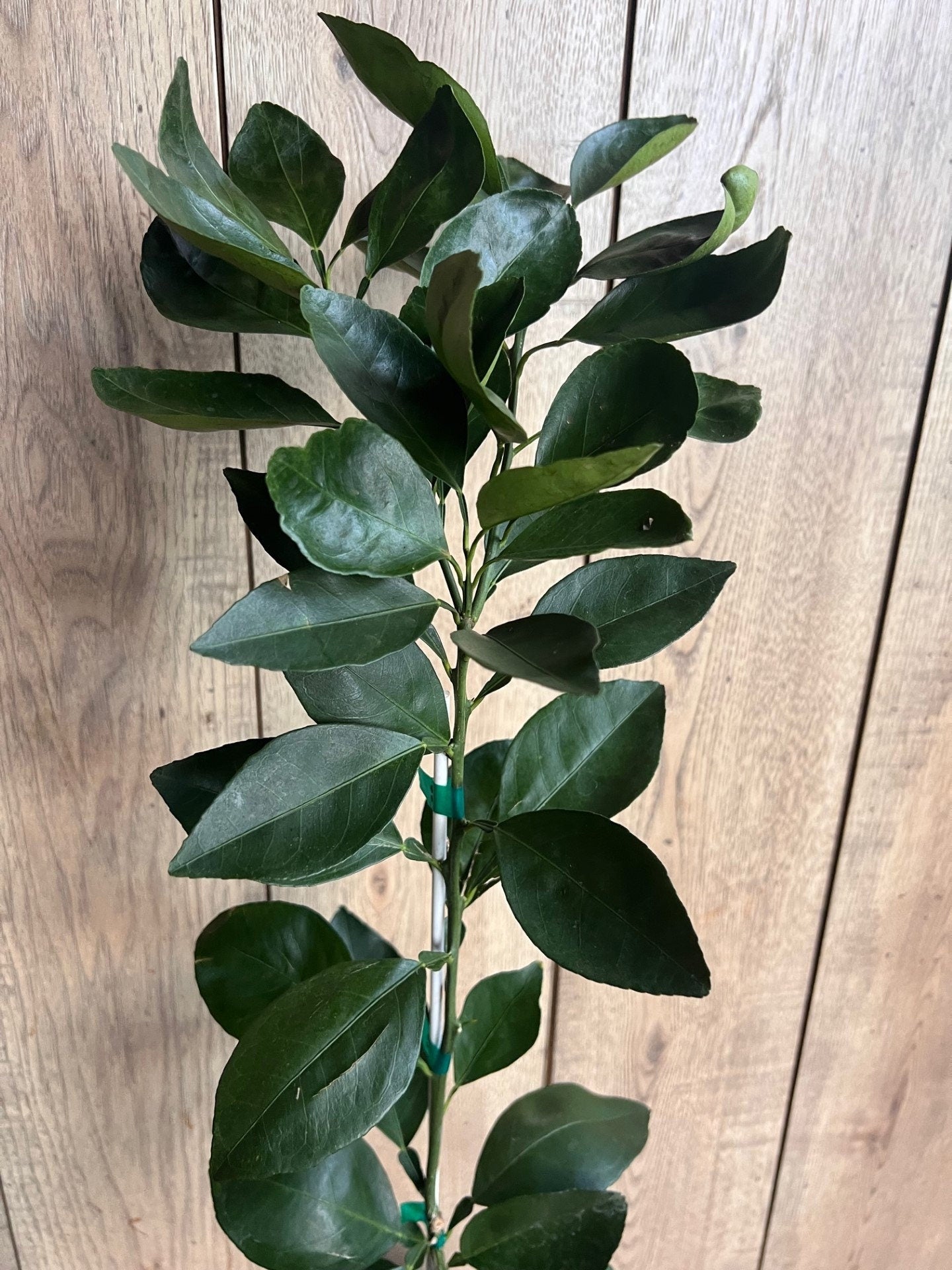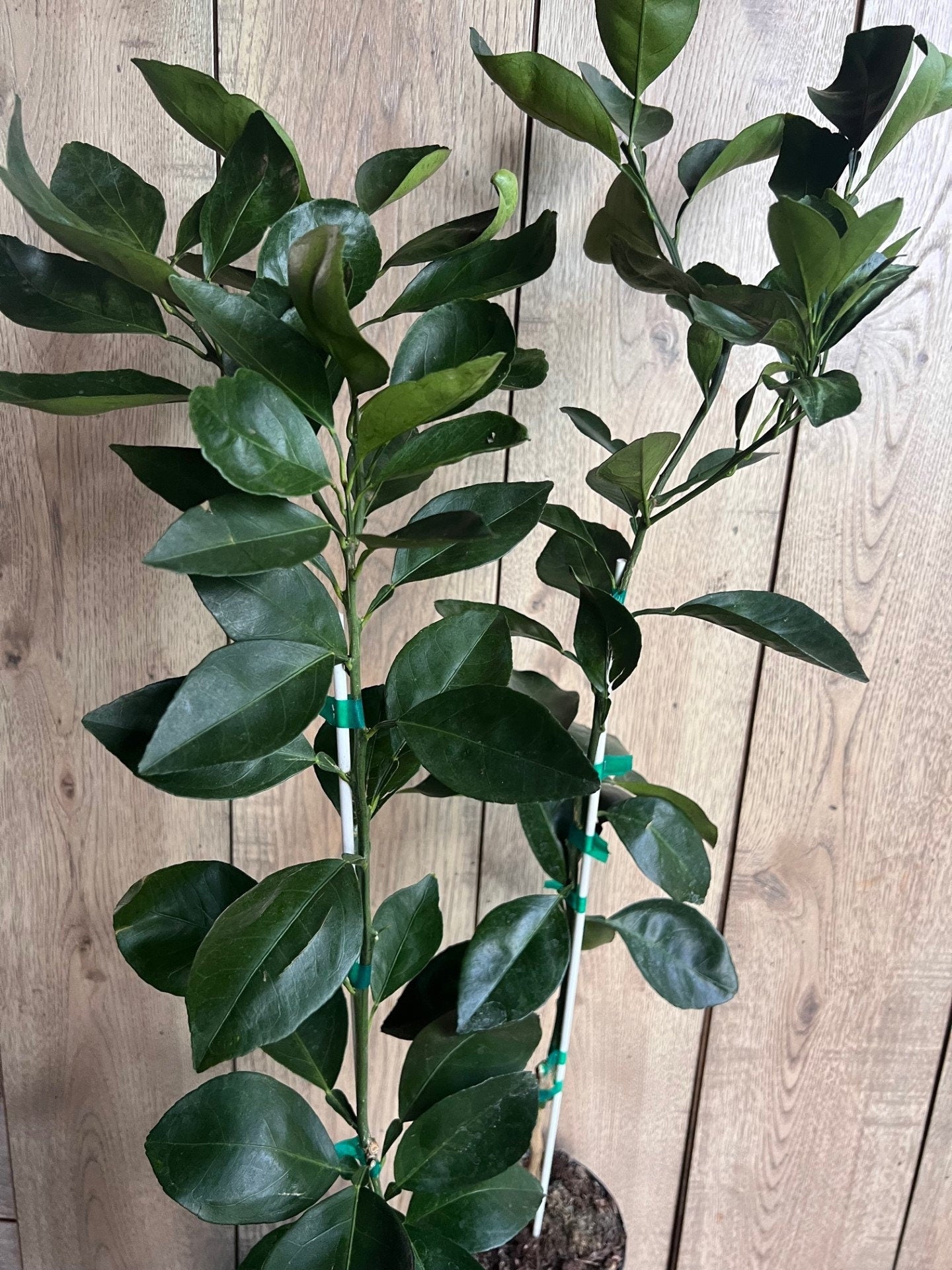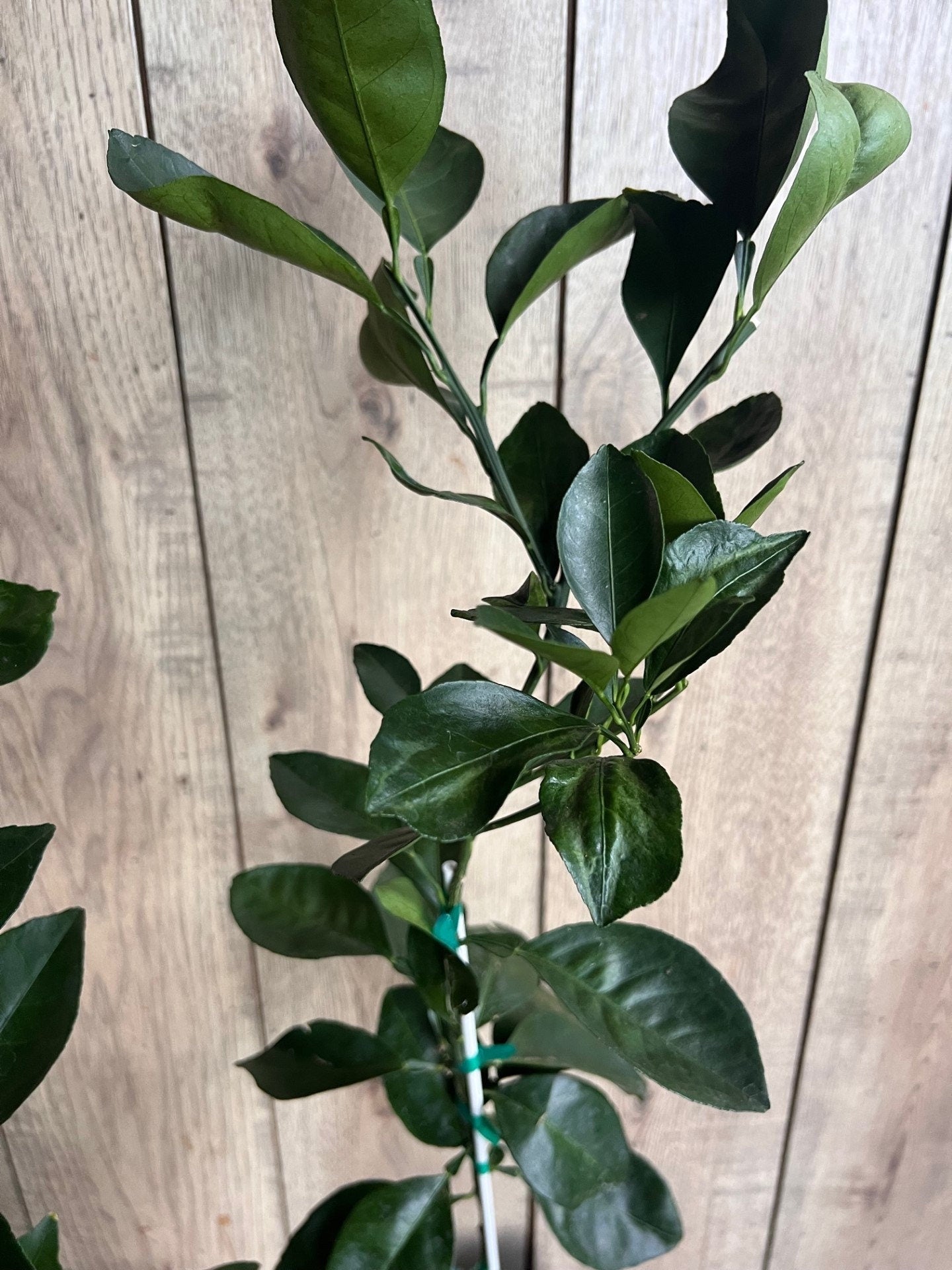Shiranui Dekopon Mandarin Orange tree in Half Gallon Pot, Shiranui, Tangerine GRAFTED, Florida Shipping Only
Shiranui Dekopon Mandarin Orange tree in Half Gallon Pot, Shiranui, Tangerine GRAFTED, Florida Shipping Only
Couldn't load pickup availability
Note: You will receive one Grafted Shiranui Dekopon Mandarin tree in 1/2-Gal pot similar to the pictures
The Shiranui mandarin (also known as Dekopon or Sumo) is a popular, seedless citrus variety valued for its easy-to-peel skin, sweet flavor, and juicy segments. A hybrid of the Kiyomi and Shiranui varieties, it was developed in Japan and is known for its vibrant orange color and tangy-sweet taste. Thriving in subtropical and tropical climates, this tree requires minimal maintenance, including occasional pruning, fertilizing, and pest management. It produces delicious fruit from late winter to early spring, making it a favorite for home gardeners and commercial growers.
Care Guide for Shiranui Mandarins
-
Location and Sunlight
- Full Sun: Shiranui mandarins need at least 8 hours of direct sunlight per day to produce sweet, juicy fruit.
- Space: These trees can grow 10-12 feet tall and wide. Plant them at least 8-10 feet away from other trees or structures to give them space to spread.
-
Soil Requirements
- Well-Draining Soil: Sandy loam or loamy soil works best, as it allows for proper drainage and prevents root rot. Avoid heavy, clay soils.
- Soil pH: Ideal pH is slightly acidic to neutral, between 5.5 and 7.0. Amend heavy soils with organic matter like compost for better drainage.
-
Watering
- Consistent Moisture: Keep the soil consistently moist during the growing season, but allow it to dry out slightly between waterings to avoid waterlogging.
- Deep Watering: Water deeply at the base of the tree, not on the leaves. Young trees need more frequent watering, while mature trees are more drought-tolerant but still benefit from regular water during dry spells.
-
Fertilizing
- Citrus Fertilizer: Use a balanced, slow-release fertilizer rich in nitrogen to support healthy growth.
- Application Timing: Fertilize in early spring and again in summer. Avoid fertilizing late in the year to prevent new growth from being damaged by cold.
- Organic Options: Compost or organic citrus fertilizers also work well to improve soil fertility.
-
Pruning
- Shape and Airflow: Prune to maintain a good shape, remove dead or damaged branches, and improve air circulation, which helps prevent diseases.
- Prune After Harvest: Prune after fruiting, typically in late winter or early spring, to prepare for the next growing season.
-
Pest and Disease Management
- Common Pests: Keep an eye out for aphids, mealybugs, citrus leaf miners, and scale insects. Use organic insecticides like neem oil if necessary.
- Fungal Diseases: Prevent root rot by ensuring proper drainage. Pruning also helps maintain air circulation to reduce the risk of fungal infections.
- Citrus Greening: Although rare, monitor for signs of citrus greening, such as yellowing leaves or poor fruit development. Seek professional advice if symptoms appear.
-
Pollination and Fruit Development
- Self-Pollinating: Shiranui mandarins are self-pollinating, but having more trees nearby can improve fruit yield. Bees and other pollinators assist with optimal pollination during flowering.
- Fruit Ripening: Fruit matures between late winter and early spring, typically from December to March. Harvest when the fruit is fully colored, slightly soft, and has a sweet aroma.
-
Harvesting
- Timing: Fruit is ready to harvest when it turns deep orange, feels firm yet slightly soft, and gives off a sweet scent.
- Method: Use pruning shears to cut the fruit from the tree, leaving a short stem attached to avoid damaging the tree.
-
Climate and Temperature
- Temperature Range: Ideal temperatures range from 60°F to 85°F (15°C to 30°C). Shiranui mandarins are sensitive to frost and should be protected if temperatures drop below freezing.
- Frost Protection: Cover the tree with frost cloth or move it indoors if grown in a pot when temperatures dip.
-
Container Growing
- Container Care: For container growth, choose a large pot with good drainage. Use a well-draining citrus potting mix and ensure the tree gets enough sunlight.
- Winter Care: Bring the container indoors during cold months or use frost protection in colder climates.
By following these care guidelines, you can grow a healthy and productive Shiranui mandarin tree that yields sweet, delicious fruit year after year. Whether grown in the ground or in containers, this citrus variety offers both ornamental beauty and tasty rewards.
Share
